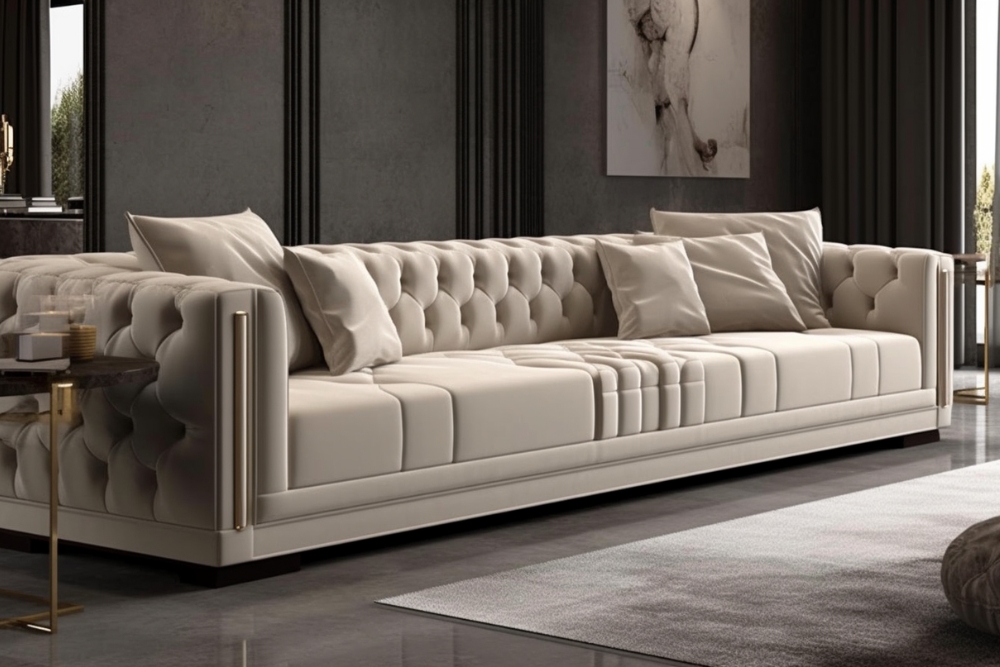How to Choose the Perfect Sofa for Your Home
Choosing the right sofa or couch shapes your living space and daily comfort. This guide walks you through everything from upholstery choices and frame durability to seat support, dimensions, and maintenance. Learn how to match style, budget, and functionality to find a sofa that lasts and feels great.

Your sofa is often the focal point of a living room — a place for relaxation, socializing, and day-to-day life. Picking the right couch means balancing looks, comfort, durability, and practicality. This guide breaks down the most important factors to consider so you can make a confident, long-lasting choice for your home.
Materials and durability
Upholstery has a major impact on both appearance and lifespan. Leather is prized for its durability and ease of cleaning; full-grain or top-grain options age well but cost more upfront. Performance fabrics — such as microfiber, polyester blends, or fabrics with stain-resistant finishes — are engineered to withstand spills and heavy use, making them excellent for homes with kids or pets. Velvet and other luxury textiles deliver a plush feel and elegant look, but they may demand gentler care and more frequent maintenance.
The frame is the backbone of a sofa. Solid hardwood frames (like kiln-dried oak, beech, or maple) offer the best structural longevity and resist warping. Engineered woods and plywood can be acceptable at lower price points but may not last as long under heavy use. Metal frames are an option for modern designs and can provide good strength, though they affect weight and style.
Size, scale, and space planning
Measure carefully before you buy. A sofa that’s too large can overpower a room, while one that’s too small may look out of place. Start by mapping the seating area and measuring available wall space, taking into account other furniture pieces. Leave circulation space — at least about 18 inches of walking room around the sofa helps maintain flow. Also confirm that stairways, doorways, elevators, and hallways can accommodate delivery and set-up; oversized pieces may require sectional configurations or modular options.
Consider proportional rules: for small rooms, choose streamlined silhouettes or armless sofas to save visual space; for open-plan areas, a larger sectional can act as an anchor. Measure seat height and depth relative to users’ body sizes — seat depth around 20–22 inches suits most people, while deeper seats favor lounging and taller users.
Comfort features and internal support
Long-term comfort comes from what’s inside. High-density foam maintains shape and offers firm support without bottoming out quickly. Down or feather blends provide a softer, more luxurious sink-in feel but typically require regular fluffing and occasional topping up. Many sofas now combine foam cores wrapped in down for a balance of support and softness.
Suspension systems determine how a sofa responds to weight. Premium sofas often use eight-way hand-tied springs; this traditional method offers exceptional comfort and longevity. Sinuous (S-shaped) springs are common in mid-range models and provide solid support at a lower cost. Webbing and serpentine springs are alternatives on budget models but may not match the lifespan of hand-tied systems.
Consider arm height, back support, and cushion construction (removable vs. attached) — these details shape everyday comfort and maintenance needs.
Popular styles and price ranges
| Style | Average Price Range | Key Features |
|---|---|---|
| Traditional 3-Seater | $800–$2,500 | Timeless silhouettes, rolled arms, decorative trim |
| Modern Sectional | $1,200–$4,000 | Modular pieces, clean lines, configurable layouts |
| Mid-Century Modern | $900–$3,000 | Tapered legs, streamlined profile, tufted backs |
| Sleeper Sofa | $1,000–$3,500 | Integrated mattress for guests, dual-purpose design |
| Premium Leather Sofa | $2,000–$5,000+ | Full-grain leather, refined construction, long lifespan |
Prices, rates, or cost estimates mentioned in this article are based on the latest available information but may change over time. Independent research is advised before making financial decisions.
Maintenance and care
A regular care routine protects your investment. Vacuum fabric sofas weekly to remove dust and crumbs and prevent soil from embedding. Rotate cushions monthly to even out wear and maintain shape. Tackle spills immediately with the appropriate cleaning method for the material — blot liquids rather than rubbing them, and consult manufacturer tags for cleaning codes.
Professional deep cleaning every 12–18 months helps maintain fabric integrity and appearance. Leather sofas benefit from periodic conditioning to prevent drying and cracking; avoid harsh chemicals that strip natural oils. For velvet and delicate textiles, gentle brushing and spot-cleaning according to supplier guidance will prolong the fabric’s life.
Making the final decision
When choosing a sofa, weigh your priorities: do you need a durable, easy-to-clean piece for a family home, or a statement, ultra-comfortable model for a calmer space? Test sofas in person when possible — sit, lie down, and evaluate cushion resilience, back support, and arm height. Think long-term: a higher initial investment in a well-built frame and quality suspension often pays off through years of reliable use.
Budget, style, and lifestyle should guide your selection. With careful measuring, consideration of materials and support systems, and a maintenance plan, you can find a sofa that looks great, feels comfortable, and stands up to daily life for many years.






